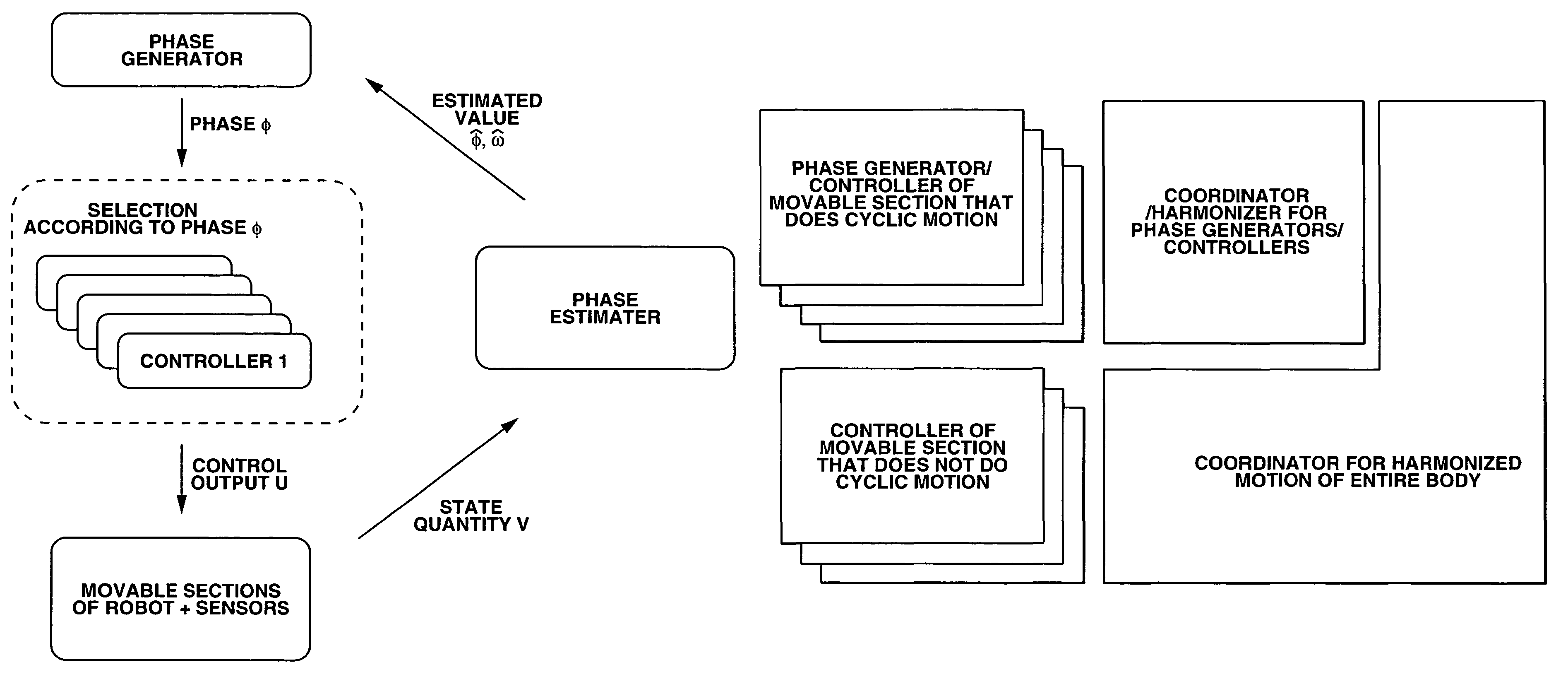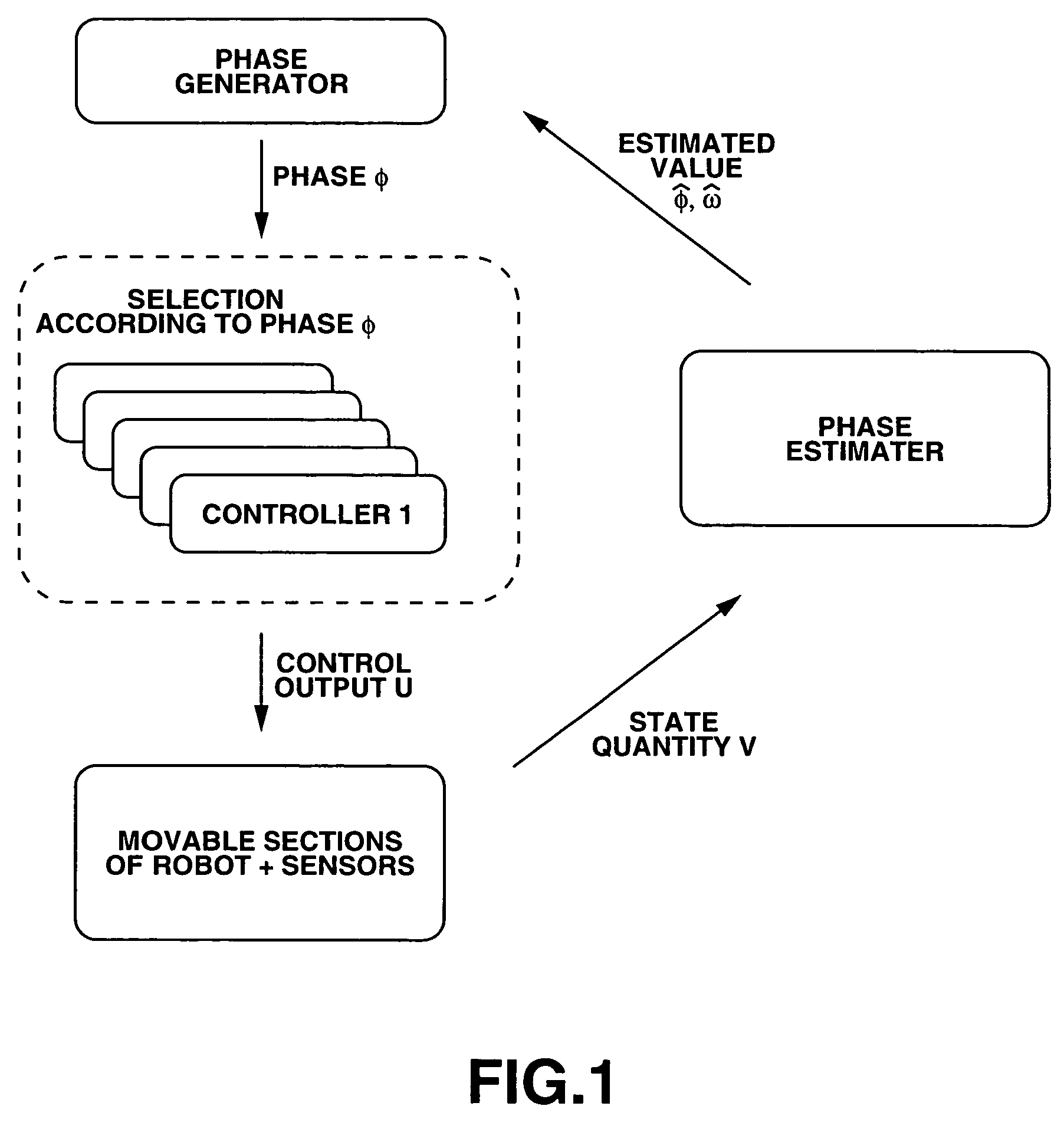Robot and attitude control method of robot
a robot and attitude control technology, applied in the field of robots, can solve the problems of affecting the operation of the robot, the robot itself and/or the object that the falling robot collides with can be fatally damaged, and the robot itself and/or the object that the falling robot collides with can be suspended and other problems
- Summary
- Abstract
- Description
- Claims
- Application Information
AI Technical Summary
Benefits of technology
Problems solved by technology
Method used
Image
Examples
Embodiment Construction
[0154]Now, the present invention will be described in greater detail by referring to the accompanying drawings.
A. Configuration of Robot
[0155]FIGS. 12 and 13 are schematic perspective front and rear views of a legged and standing mobile humanoid robot 100 that is an embodiment of the present invention. As illustrated, the legged mobile robot 100 has a trunk section, a head section, left and right upper limbs and left and right lower limbs that are driven to operate for moving. The operation of the machine body is controlled by a control section (not shown) that is typically contained in the trunk.
[0156]Each of the lower limbs has a thigh section, a knee joint, a shank section, an ankle and an instep and is linked substantially to the lower end of the trunk section by a hip joint. Each of the upper limbs has an upper arm, an elbow joint and a forearm and is linked to the corresponding upper lateral edge of the trunk section by a shoulder joint. The head section is linked substantiall...
PUM
 Login to View More
Login to View More Abstract
Description
Claims
Application Information
 Login to View More
Login to View More - R&D
- Intellectual Property
- Life Sciences
- Materials
- Tech Scout
- Unparalleled Data Quality
- Higher Quality Content
- 60% Fewer Hallucinations
Browse by: Latest US Patents, China's latest patents, Technical Efficacy Thesaurus, Application Domain, Technology Topic, Popular Technical Reports.
© 2025 PatSnap. All rights reserved.Legal|Privacy policy|Modern Slavery Act Transparency Statement|Sitemap|About US| Contact US: help@patsnap.com



